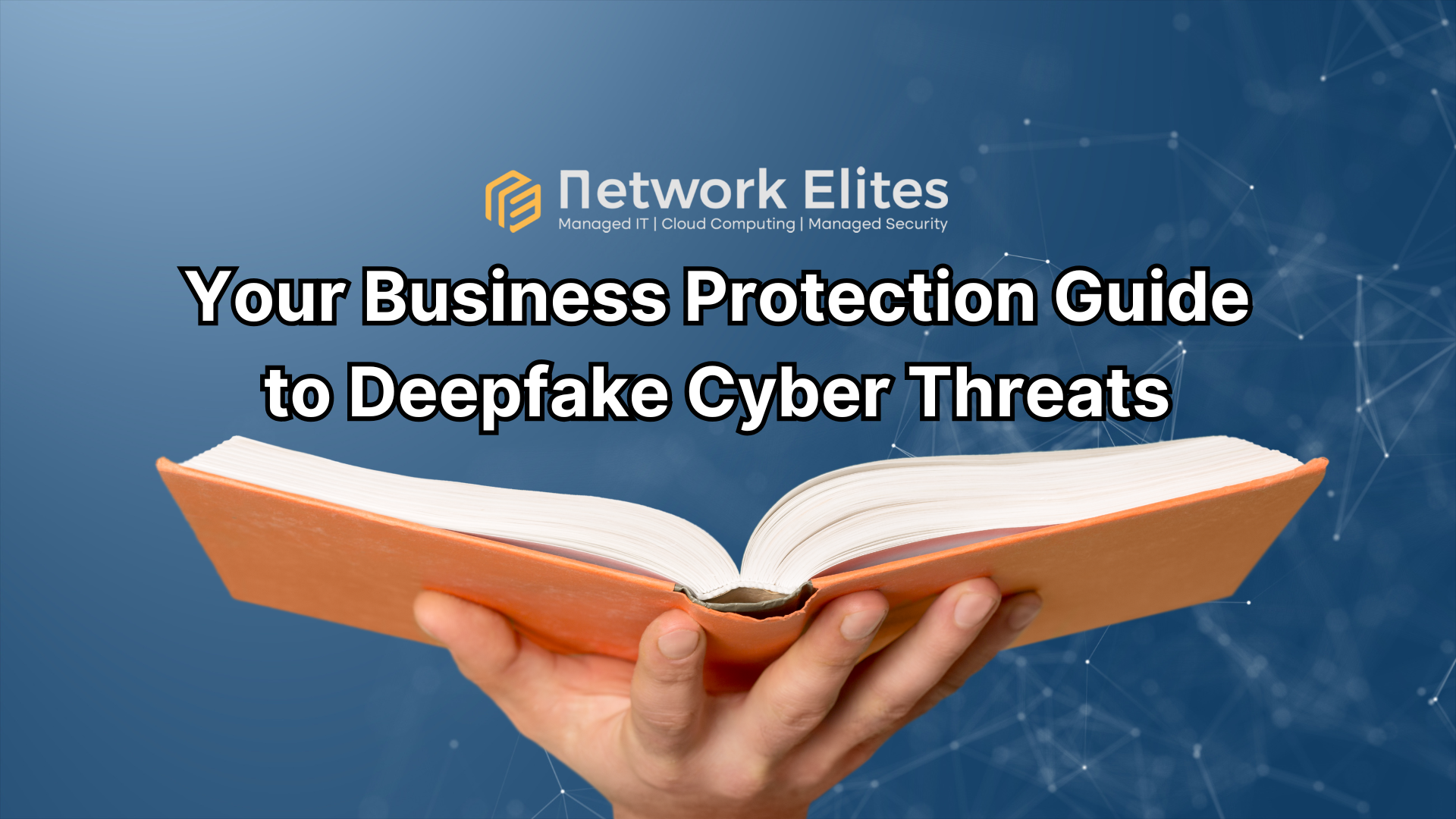The Rise of Deepfake Cyber Threats: How Businesses Can Prepare
Artificial intelligence has revolutionized many aspects of our digital world, but its darker applications are becoming increasingly concerning for businesses worldwide. Deepfakes—sophisticated AI-generated content that can create realistic but fabricated videos, audio recordings, and images—represent one of the most pressing cybersecurity challenges of our time.
Originally developed for entertainment and research purposes, deepfake technology has evolved rapidly. What once required Hollywood-level resources and expertise can now be accomplished with consumer-grade software and minimal technical knowledge. This democratization of deepfake creation has opened the floodgates for malicious actors to exploit this technology for financial gain, corporate espionage, and reputation damage.
The sophistication of modern deepfakes has reached a point where even trained professionals struggle to distinguish authentic content from fabricated material. This technological advancement poses significant risks to businesses across all industries, from financial institutions vulnerable to voice cloning scams to corporations facing potential brand damage through fake executive communications.
Understanding these emerging threats and implementing robust defense strategies is no longer optional—it's essential for business survival in an increasingly digital landscape.
Understanding Deepfake Cyber Threats
The spectrum of deepfake-enabled cyber threats continues to expand as attackers discover new ways to weaponize this technology. Business leaders must recognize the various forms these threats can take to develop effective countermeasures.
Financial Fraud and Business Email Compromise
Cybercriminals are leveraging voice cloning technology to impersonate executives during phone calls, requesting urgent wire transfers or sensitive information. These audio deepfakes can capture speech patterns, accents, and vocal mannerisms so accurately that even close colleagues may be deceived. Similarly, video deepfakes are being used in virtual meetings to impersonate key decision-makers, potentially authorizing fraudulent transactions or revealing confidential information.
Corporate Espionage and Disinformation
Malicious actors are creating fake videos of company executives making controversial statements or announcing false information that can manipulate stock prices, damage business relationships, or trigger regulatory investigations. These deepfake campaigns can spread rapidly across social media platforms, causing irreparable harm before the truth can be established.
Customer Trust Erosion
Deepfakes targeting customer-facing communications can undermine trust in legitimate business communications. When customers cannot distinguish between authentic and fabricated content from your organization, it creates doubt about all future interactions, potentially impacting sales and long-term customer relationships.
Technical Detection Methods for Businesses
While deepfake technology continues to advance, detection methods are evolving alongside these threats. Organizations need to implement multiple layers of technical detection to identify potentially fabricated content.
Automated Detection Software
Specialized deepfake detection tools analyze subtle inconsistencies in facial movements, lighting patterns, and pixel-level artifacts that may indicate artificial generation. These solutions can be integrated into existing security infrastructure to scan incoming communications and social media mentions automatically.
Biometric Authentication Systems
Advanced biometric verification systems can detect anomalies in voice patterns, facial recognition markers, and behavioral characteristics that may indicate deepfake usage. These systems create baseline profiles of legitimate employees and flag communications that deviate from established patterns.
Blockchain-Based Content Verification
Some organizations are implementing blockchain technology to create immutable records of authentic communications. This approach allows recipients to verify the legitimacy of content by checking its cryptographic signature against a distributed ledger of verified communications.
Implementing Preventive Strategies
Proactive defense against deepfake threats requires a comprehensive approach that addresses both technological vulnerabilities and human factors.
Multi-Factor Authentication Protocols
Establish mandatory multi-factor authentication for all high-risk communications, particularly those involving financial transactions or sensitive information sharing. Require secondary verification through separate communication channels for any unusual requests, regardless of their apparent authenticity.
Communication Verification Procedures
Develop standardized procedures for verifying the authenticity of unexpected or high-stakes communications. Create code words, challenge questions, or specific protocols that legitimate staff members would know, making it difficult for attackers to successfully impersonate key personnel.
Social Media Monitoring and Response
Implement comprehensive monitoring systems to detect potential deepfake content featuring your organization, executives, or brand assets. Rapid identification and response can minimize the spread of malicious content and protect your reputation.
Employee Training and Awareness Programs
Your workforce represents both your strongest defense against deepfake threats and your most vulnerable attack surface. Comprehensive training programs are essential for building organizational resilience.
Recognition Training Sessions
Conduct regular training sessions that teach employees how to identify potential deepfake content. Use examples of both obvious and sophisticated deepfakes to help staff understand the range of threats they may encounter. Focus on subtle indicators such as unnatural eye movements, inconsistent lighting, or audio-visual synchronization issues.
Verification Protocol Education
Train employees on proper verification procedures for suspicious communications. Emphasize the importance of using alternative communication channels to confirm unusual requests and create a culture where questioning authenticity is encouraged rather than discouraged.
Incident Reporting Procedures
Establish clear reporting channels for suspected deepfake encounters and ensure employees understand they will not face negative consequences for reporting false alarms. Quick reporting can prevent successful attacks and help improve your organization's overall security posture.
Developing an Incident Response Plan
When deepfake incidents occur, rapid and coordinated response can minimize damage and restore stakeholder confidence.
Immediate Response Team
Designate a specialized response team with representatives from cybersecurity, legal, communications, and executive leadership. This team should have pre-established communication channels and decision-making authority to act quickly when incidents occur.
Communication Strategy
Develop template communications for various deepfake scenarios, including customer notifications, media statements, and regulatory filings. Having prepared responses allows for faster reaction times while ensuring consistent messaging across all stakeholders.
Evidence Preservation and Legal Action
Establish procedures for preserving digital evidence of deepfake attacks and coordinate with law enforcement agencies when appropriate. Document the technical characteristics of fake content and maintain detailed incident logs for potential legal proceedings.
Future Trends and Emerging Threats
The deepfake threat landscape continues to evolve rapidly, requiring businesses to stay informed about emerging risks and defensive technologies.
Real-Time Deepfake Generation
Advancing computational power is making real-time deepfake generation increasingly feasible, potentially enabling live video manipulation during virtual meetings or customer service interactions. This development will require more sophisticated detection methods and authentication protocols.
Multi-Modal Deepfakes
Future threats may combine multiple deepfake techniques simultaneously, creating fabricated content that includes coordinated video, audio, and text elements. These sophisticated attacks will be more challenging to detect and may require comprehensive AI-powered defense systems.
Regulatory Response Evolution
Governments and regulatory bodies are beginning to address deepfake threats through legislation and compliance requirements. Businesses should monitor regulatory developments and ensure their security practices align with emerging legal frameworks.
Frequently Asked Questions
What should I do if I suspect my business has been targeted by a deepfake attack?
Immediately isolate the suspected content and notify your incident response team. Document all available evidence and avoid sharing or responding to the content until its authenticity can be verified through technical analysis.
How can Network Elites help protect my business against deepfake threats?
Network Elites provides comprehensive cybersecurity solutions including deepfake detection technology, employee training programs, and incident response planning. Our security experts can assess your current vulnerabilities and implement customized protection strategies tailored to your organization's specific risk profile and industry requirements.
Are small businesses at risk from deepfake attacks?
Yes, deepfake threats affect organizations of all sizes. Small businesses may actually be more vulnerable due to limited security resources and less sophisticated detection capabilities. However, targeted prevention strategies can provide effective protection even with limited budgets.
Protecting Your Business with Expert Cybersecurity Solutions
Deepfake cyber threats pose a growing risk to businesses across all industries. As these attacks become more advanced, detection is increasingly difficult without proper preparation and guidance.
Organizations that act now with strong defense strategies will be better equipped to handle future attacks and maintain trust. This includes using detection tools, training employees to spot threats, and building effective incident response plans.
Network Elites specializes in protecting businesses from emerging cyber threats, including deepfake attacks. Our experts can assess vulnerabilities, deploy detection technologies, and create customized training programs. We offer comprehensive security solutions that adapt as threats evolve, keeping your organization protected.
Don’t wait to become a target. Contact Network Elites today for a security assessment and learn how we can safeguard your business from deepfake cyber threats.








